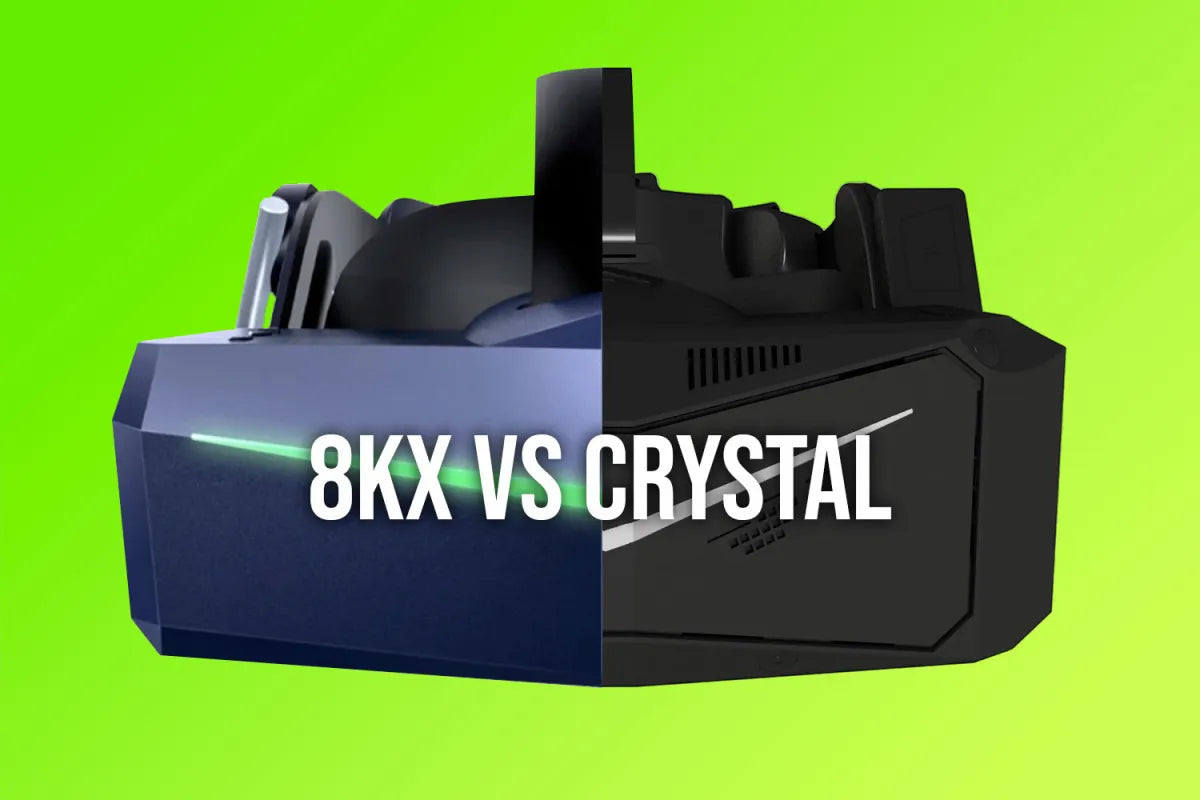The 8KX is the second generation of VR headsets from Pimax, and the Crystal is the third generation. The 8K series was launched in 2019 and the Crystal announced last year, for sale this year.
Let’s have a look at the most important differences, and some of the similarities.
1: Lenses
One of the biggest differences is the lenses. The 8KX uses fresnel lenses, this helps it achieve a massively wide FOV, but at the cost of clarity against the Crystal. Some people have experienced some distortion on the edges of the 8KX, but the Crystal maintains a perfect image.
The Crystal has glass aspheric lenses, helping achieve a vibrant and clear image, not just in the middle, but the entire peripheral whole vision. Plus they’re easily interchangeable! Damaged or scratched lenses can be easily replaced. It also allows different PPD and FOV options for upgradability.
Will sim racers or flight simmers prefer the Crystal over the 8KX, despite the lower FOV? We think so! The visual fidelity in the center is much sharper, and the large sweetspot reduces the need to adjust the headset on your face.
2: Panels
At first glance, the panels may look similar as they have a comparable pixel count. The 8KX has 7680 x 2160 resolution, with the Crystal being at 5760 x 2880 pixels. The Crystal has QLED and mini-led panels, with local dimming. This achieves incredible vibrancy and pitch-black darks to provide the best experience possible.
You can check the DCS footage on the Pimax Crystal (through-the-lens) by Wenzpz to see the incredible clarity of the view in the sky.
3: Tracking
Tracking has made a huge leap forward. No longer will you need to set up external base-stations which are difficult to mount and position as found previously with the 8KX. With the Crystal, the headset is now capable of self-tracking through its cameras. (Read more: Inside-out vs outside-in tracking) The Crystal also comes with controllers, removing the need to purchase expensive solutions externally.
Enthusiasts with full-body tracking can still opt to purchase a lighthouse faceplate separately to integrate into their existing base-station ecosystem.
4: Battery
The Crystal now has a battery on the back of the headset. This helps better distribute the weight of the headset, whilst enabling inside-out tracking and standalone features. Future functions such as wireless PCVR will also be supported thanks to the internal battery.
More about why the Crystal has a Snapdragon XR2 chip and battery.
Similarities
The general layout of the headset is similar, sharing the same comfortable strap system. Cables are also interchangeable and utilize the same connections. The iconic Pimax chevron is still present on the front and is a core design of all Pimax headsets.
Conclusion
Overall, the Crystal is a more complete system versus the 8KX. Modular functions such as interchangeable faceplates (LH plate, MR plate) and wireless modules will be available for the headset. The 8KX was built with the limitations of VR technology at its time. The Crystal is the future of VR including the very best that Pimax can offer.
If flexibility from a high-end VR headset is valuable to you, the Crystal is an amazing choice. Thanks for reading!








